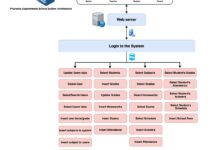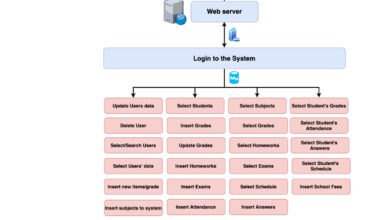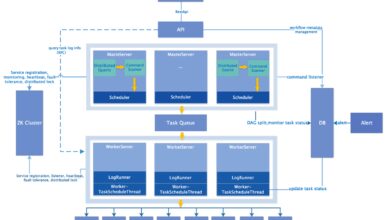System Integration: 7 Powerful Strategies for Seamless Success
In today’s hyper-connected digital world, system integration isn’t just a tech buzzword—it’s a business imperative. Whether you’re scaling operations or merging platforms, mastering system integration can transform chaos into clarity.
What Is System Integration and Why It Matters

At its core, system integration refers to the process of connecting different computing systems, software applications, and IT infrastructure to function as a unified whole. This enables seamless data flow, reduces redundancy, and improves operational efficiency across departments and platforms.
Defining System Integration in Modern Business
System integration is no longer limited to IT departments. It’s a strategic enabler across industries—from healthcare and finance to manufacturing and retail. When systems like ERP, CRM, HRM, and supply chain platforms operate in silos, data inconsistencies, delays, and inefficiencies arise. System integration bridges these gaps.
- It ensures real-time data synchronization across platforms.
- It reduces manual data entry and human error.
- It supports scalability and digital transformation.
“Integration is not just about connecting systems—it’s about aligning business processes, data, and people.” — Gartner Research
Types of System Integration Approaches
There are several architectural models used in system integration, each suited to different organizational needs and technical landscapes:
- Point-to-Point Integration: Direct connections between two systems. Simple but hard to scale.
- Vertical Integration: Systems are grouped by function (e.g., finance, HR), creating siloed stacks. Limited interoperability.
- Horizontal Integration (Enterprise Service Bus – ESB): A middleware layer connects all systems, enabling standardized communication. Highly scalable.
- Star Integration: Each system connects to every other system, creating a web of links. Flexible but complex to maintain.
- Common Data Format Integration: All systems translate data into a shared format, reducing transformation overhead.
Choosing the right model depends on your organization’s size, complexity, and long-term goals. For example, startups might start with point-to-point, while enterprises often adopt ESB or API-led integration.
The Evolution of System Integration Over Time
System integration has evolved dramatically over the past few decades, shaped by advances in computing, networking, and software architecture. Understanding this evolution helps contextualize today’s best practices and future trends.
From Legacy Systems to Modern Platforms
In the 1980s and 1990s, businesses relied on monolithic legacy systems—mainframes and proprietary software that were difficult to modify or connect. Integration was often manual or batch-based, leading to delays and data lag.
As client-server architectures emerged in the 1990s, integration became more dynamic. Middleware solutions like IBM MQ and CORBA enabled asynchronous messaging between systems. However, these were complex and required deep technical expertise.
By the 2000s, the rise of ERP systems (e.g., SAP, Oracle) created a demand for enterprise-wide integration. This led to the adoption of ESBs and service-oriented architecture (SOA), which standardized how systems communicated using web services (SOAP, WSDL).
The Rise of Cloud and API-Driven Integration
The 2010s marked a turning point with the widespread adoption of cloud computing. SaaS platforms like Salesforce, Workday, and Shopify required new integration models that were agile, scalable, and cost-effective.
APIs (Application Programming Interfaces) became the cornerstone of modern system integration. RESTful APIs, in particular, offered lightweight, flexible, and developer-friendly ways to connect systems. Platforms like MuleSoft, Dell Boomi, and Microsoft Azure Logic Apps emerged as leaders in API management and integration platforms (iPaaS).
- According to MuleSoft, organizations using API-led connectivity reduce integration project time by up to 60%.
- iPaaS adoption grew by over 45% annually between 2018 and 2022, per Gartner.
Today, system integration is increasingly automated, intelligent, and decentralized—thanks to AI, microservices, and event-driven architectures.
Key Benefits of Effective System Integration
When done right, system integration delivers transformative benefits across the organization. It’s not just a technical upgrade—it’s a strategic lever for growth, agility, and customer satisfaction.
Improved Operational Efficiency
One of the most immediate benefits of system integration is the elimination of redundant tasks. For example, when your CRM automatically syncs customer data with your ERP, sales teams don’t need to re-enter information, and finance teams get instant access to invoices and payments.
- Reduces manual data entry by up to 70%, according to a 2021 IBM study.
- Speeds up order-to-cash and procure-to-pay cycles.
- Enables real-time reporting and dashboards.
Enhanced Data Accuracy and Decision-Making
Silos lead to conflicting data—e.g., sales reporting $1M in revenue while finance shows $800K. System integration ensures a single source of truth.
With unified data, executives can make faster, more accurate decisions. For instance, a retail chain integrating POS, inventory, and e-commerce systems can predict stockouts and optimize supply chains in real time.
“Data is the new oil, but only if it flows freely.” — Clive Humby, Mathematician and Data Science Pioneer
Scalability and Future-Proofing
As businesses grow, they adopt new tools and enter new markets. A well-integrated system architecture allows for easier onboarding of new applications and services.
Microservices and containerization (e.g., Docker, Kubernetes) enable modular integration, where new features can be added without disrupting existing workflows. This agility is critical in fast-moving industries like fintech and e-commerce.
Common Challenges in System Integration Projects
Despite its benefits, system integration is notoriously challenging. Many projects fail due to poor planning, technical debt, or organizational resistance. Understanding these pitfalls is key to avoiding them.
Data Inconsistencies and Format Mismatches
Different systems often store data in incompatible formats—e.g., date formats (MM/DD/YYYY vs. DD/MM/YYYY), currency standards, or naming conventions. Without proper data mapping and transformation, integration can lead to errors or data loss.
Solutions include:
- Using ETL (Extract, Transform, Load) tools like Talend or Informatica.
- Implementing data governance policies.
- Creating canonical data models to standardize formats across systems.
Legacy System Compatibility
Many organizations still rely on legacy systems that lack modern APIs or support for secure protocols. Integrating these with cloud platforms can be technically complex and costly.
Strategies to overcome this include:
- Wrapping legacy systems with API gateways.
- Using middleware to translate protocols (e.g., FTP to HTTPS).
- Phased migration: integrate first, then gradually replace outdated systems.
For example, a bank might use an API layer to connect its 1990s core banking system with a modern mobile banking app.
Security and Compliance Risks
Every integration point is a potential security vulnerability. Exposing internal systems via APIs increases the attack surface for cyber threats like data breaches or injection attacks.
Additionally, industries like healthcare (HIPAA) and finance (GDPR, PCI-DSS) must ensure integrations comply with strict regulations.
Best practices include:
- Implementing OAuth 2.0 and OpenID Connect for secure authentication.
- Encrypting data in transit and at rest.
- Conducting regular security audits and penetration testing.
- Using integration platforms with built-in compliance features.
Best Practices for Successful System Integration
Success in system integration isn’t accidental—it’s the result of careful planning, stakeholder alignment, and adherence to proven methodologies.
Start with a Clear Integration Strategy
Before writing a single line of code, define your goals: What systems need to talk? What data must flow? What business outcomes are you targeting?
A solid strategy includes:
- Inventory of existing systems and data flows.
- Identification of integration pain points.
- Selection of the right integration architecture (e.g., iPaaS, ESB).
- Phased roadmap with measurable milestones.
For example, a manufacturer might prioritize integrating its MES (Manufacturing Execution System) with its ERP before tackling warehouse management.
Choose the Right Integration Tools and Platforms
The market is flooded with integration solutions. Choosing the right one depends on your technical environment, budget, and team expertise.
- iPaaS (Integration Platform as a Service): Ideal for cloud-first organizations. Examples: MuleSoft, Dell Boomi, AWS AppRunner.
- On-Premise ESB: For organizations with strict data residency requirements. Examples: IBM Integration Bus, Apache Camel.
- Custom-Built Middleware: High control but high maintenance. Suitable for unique use cases.
Consider factors like ease of use, scalability, support for APIs, and pre-built connectors.
Involve Stakeholders Early and Often
System integration impacts multiple departments—IT, finance, operations, sales. Excluding key stakeholders leads to misaligned expectations and resistance.
Best practices:
- Form a cross-functional integration team.
- Conduct regular workshops to gather requirements.
- Provide training and change management support.
- Communicate progress transparently.
A healthcare provider integrating EHR (Electronic Health Records) with billing systems must involve clinicians, coders, and IT to ensure usability and compliance.
Real-World Examples of System Integration Success
Theoretical knowledge is valuable, but real-world examples illustrate how system integration drives tangible results.
Retail: Omnichannel Integration at Nike
Nike transformed its customer experience by integrating its e-commerce platform, mobile app, in-store POS, and inventory systems. This allowed:
- Buy online, pick up in-store (BOPIS).
- Real-time inventory visibility.
- Personalized marketing based on unified customer profiles.
Result: Nike reported a 30% increase in digital sales within two years of full integration.
Healthcare: Interoperability in Mayo Clinic
Mayo Clinic implemented a system integration strategy to connect its EHR, lab systems, imaging databases, and telemedicine platforms. Using HL7 and FHIR standards, they achieved seamless data exchange across departments.
Benefits included:
- Faster diagnosis through instant access to patient history.
- Reduced duplicate testing.
- Improved care coordination.
This integration was critical during the pandemic, enabling rapid scaling of virtual care.
Manufacturing: Smart Factory Integration at Siemens
Siemens’ Amberg factory in Germany is a model of Industry 4.0. By integrating PLCs, SCADA systems, MES, and ERP via a centralized data hub, they achieved:
- 99.9988% production quality.
- Real-time production monitoring.
- Automated quality control and predictive maintenance.
This level of system integration reduced downtime by 20% and increased throughput by 15% annually.
Future Trends in System Integration
The future of system integration is smarter, faster, and more autonomous. Emerging technologies are reshaping how systems connect and collaborate.
AI and Machine Learning in Integration
AI is being used to automate integration tasks like data mapping, anomaly detection, and error resolution. For example, AI can learn how fields in two systems correspond (e.g., “CustID” vs. “Customer_ID”) without manual configuration.
Tools like Oracle AI and Azure Machine Learning are being embedded into integration platforms to enable intelligent workflows.
Event-Driven and Real-Time Integration
Traditional batch processing is giving way to event-driven architectures. Instead of polling systems periodically, integrations now respond to real-time events—e.g., a new order triggers inventory update, shipping, and notification workflows instantly.
Technologies like Apache Kafka and AWS EventBridge enable high-throughput, low-latency event streaming, making real-time integration scalable and reliable.
Low-Code and Citizen Integrators
Low-code integration platforms allow non-developers (“citizen integrators”) to build integrations using drag-and-drop interfaces. This democratizes integration and accelerates project delivery.
Platforms like Microsoft Power Automate and Zapier empower business users to connect apps without coding. However, governance is essential to avoid shadow IT and security risks.
How to Measure the ROI of System Integration
Investing in system integration requires justification. Measuring return on investment (ROI) helps demonstrate value and secure ongoing support.
Quantitative Metrics to Track
These measurable KPIs help assess integration success:
- Process Cycle Time: How much faster are workflows?
- Error Rate: Reduction in data entry or processing errors.
- Cost Savings: Reduced labor, fewer system downtimes, lower maintenance.
- Revenue Impact: Increased sales due to better customer experience.
- System Uptime: Improved reliability and availability.
For example, a logistics company integrated its TMS (Transportation Management System) with GPS and fuel tracking. Result: 18% reduction in fuel costs and 25% faster delivery times.
Qualitative Benefits
Not all benefits are quantifiable, but they’re equally important:
- Improved employee satisfaction (less manual work).
- Better customer experience (faster response times).
- Enhanced innovation (teams can focus on strategy vs. firefighting).
- Stronger compliance and audit readiness.
Combining both quantitative and qualitative metrics gives a holistic view of ROI.
Conclusion: The Strategic Power of System Integration
System integration is no longer optional—it’s a cornerstone of digital transformation. From eliminating data silos to enabling real-time decision-making, its impact spans efficiency, security, and innovation. By understanding the types, benefits, challenges, and best practices of system integration, organizations can build agile, future-ready infrastructures. As technology evolves, so too will integration—becoming smarter, faster, and more accessible. The businesses that master it today will lead tomorrow.
What is system integration?
System integration is the process of connecting different IT systems, software applications, and devices so they can work together as a unified, coordinated whole. It enables seamless data exchange and process automation across an organization.
Why is system integration important?
It eliminates data silos, improves operational efficiency, enhances data accuracy, and supports scalability. It’s essential for digital transformation, customer experience, and competitive advantage.
What are common system integration challenges?
Key challenges include legacy system compatibility, data format inconsistencies, security risks, lack of skilled personnel, and organizational resistance to change.
What tools are used for system integration?
Popular tools include MuleSoft, Dell Boomi, Microsoft Azure Logic Apps, Apache Kafka, and low-code platforms like Zapier and Power Automate. The choice depends on architecture, budget, and technical needs.
How do you measure the success of system integration?
Success can be measured through KPIs like reduced process cycle time, lower error rates, cost savings, improved system uptime, and qualitative benefits like employee satisfaction and customer experience.
Further Reading:









